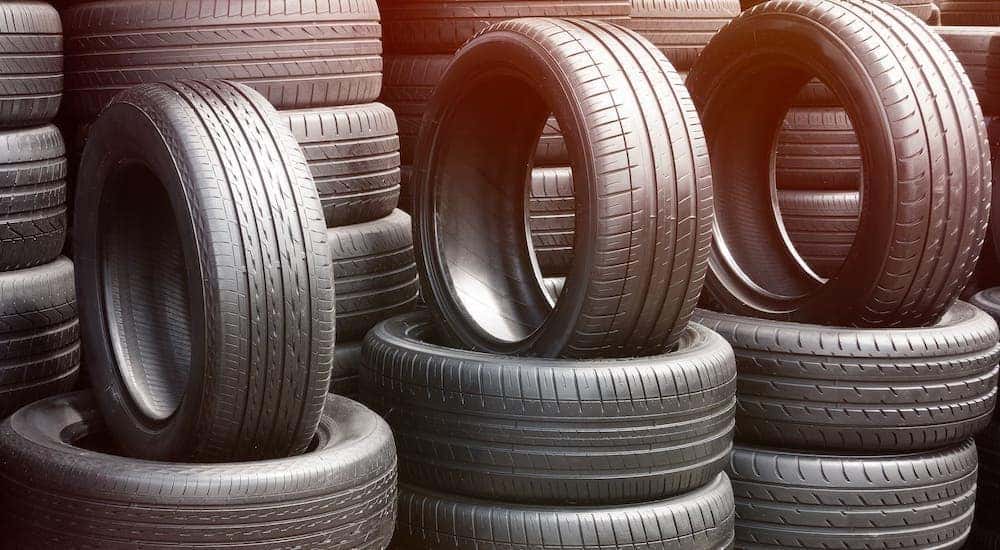Do not Miss Out on Mopar Tire Service Specials: Budget Friendly Maintenance Plans
Wiki Article
Tire Solution: The Effect of Weather
When it involves ensuring ideal performance and safety when driving, understanding the effect of climate condition on tire solution is vital. From scorching warm to icy roadways, each weather condition aspect can significantly influence tire functionality and overall driving experience. By diving into the results of varying weather conditions on tires, chauffeurs can acquire beneficial insights that might boost their vehicle's efficiency and longevity. In this discussion, we will explore the intricate relationship in between weather condition conditions and tire service, dropping light on the significance of weather-specific tire maintenance practices and considerations.Heat and Tire Efficiency
When exposed to high temperature levels, tires experience changes in efficiency that can dramatically impact automobile safety and security and handling. The warm generated from prolonged driving or warm weather condition conditions causes the tire rubber to soften, leading to reduced tread life and raised wear.Moreover, high temperatures can accelerate the procedure of tire aging, creating the rubber to wear away faster. This can cause splits, bulges, and other kinds of damage that compromise the structural stability of the tire. To minimize the impacts of heat on tire performance, drivers need to frequently examine their tire pressure, rotate tires to guarantee even use, and check for any kind of indications of damage. In addition, making use of tires particularly developed to endure high temperature levels can help maintain optimum performance and security when driving.
Cold Climate Effects
Cold climate problems can have a substantial effect on tire efficiency and safety and security. As temperature levels decrease, tire rubber can set, bring about lowered grip on icy or snow-covered roadways. In winter, tires might additionally shed air stress extra quickly, which can affect taking care of and fuel efficiency. In addition, cold temperature levels can create tire sidewalls to tense, enhancing the danger of damages from pits or various other road dangers.
To minimize the effects of chilly climate on tires, it is essential to on a regular basis inspect tire stress and inflate them to the supplier's recommended levels. Using wintertime or all-season tires developed for winter problems can also boost traction and grip on icy or snowy roadways - tires morris il. Correct tire upkeep, including routine examinations for wear and damage, becomes even a lot more vital during cooler months to make certain ideal performance and safety
Rainy Conditions Impact
Tires with damaged treads are much more prone to hydroplaning, where a layer of water constructs up in between the road and the tire surface, leading to loss of traction. To fight this, drivers ought to regularly check their tires for appropriate step deepness and consider investing in tires particularly made for damp problems.

Snow and Tire Safety
When driving in snowy problems, having the ideal tires can make a considerable distinction in security and performance. Winter season tires are created with special rubber substances and step patterns to offer far better traction on snow and ice compared to all-season tires.In addition to using winter tires, it is essential to ensure they are appropriately blown up. Cold weather condition can cause tire pressure to go down, impacting grip and handling (mopar tire service specials). Routinely inspecting and maintaining the correct tire stress is important for ideal efficiency in snowy conditions

Weather-Related Tire Maintenance
When encountered with various climate problems, proper tire maintenance becomes an essential facet of vehicle safety and security and performance. Weather-related tire upkeep encompasses a variety of methods targeted at guaranteeing ideal tire feature and longevity in various climate scenarios. One crucial aspect of weather-related tire upkeep is tire stress regulation. Varying temperatures can create tire pressure to differ, affecting traction and gas efficiency. Routinely adjusting and examining tire stress according to manufacturer referrals is essential for risk-free driving in changing weather problems. Additionally, tire tread depth plays a considerable function in managing different weather condition elements. Tires with appropriate step deepness provide better hold on wet or icy roadways, minimizing the threat of hydroplaning or skidding. When tread wear reaches a certain deepness is essential for preserving traction and security in damaging weather, inspecting tire tread on a regular basis and changing tires. By focusing on weather-related tire upkeep, chauffeurs can improve safety and security, improve lorry efficiency, and lengthen the life expectancy of their tires.Conclusion
To conclude, weather condition conditions have a substantial influence on tire performance and safety. From warm impacting tire stress and put on to cold weather condition minimizing traction, it is vital to consider the climate when preserving and utilizing tires. Stormy problems can decrease grip and cause hydroplaning, while snow can boost the risk of mishaps if tires are not appropriately equipped. Weather-related tire maintenance is critical in guaranteeing ideal efficiency and safety and security when driving.In this conversation, we will certainly explore the intricate partnership between climate conditions and tire solution, dropping light on the relevance of weather-specific tire upkeep methods and considerations.

Report this wiki page